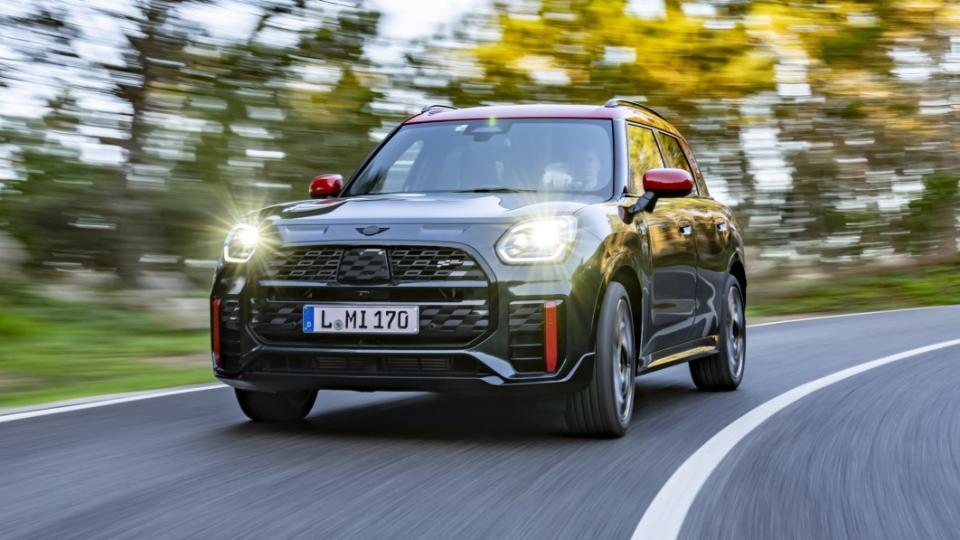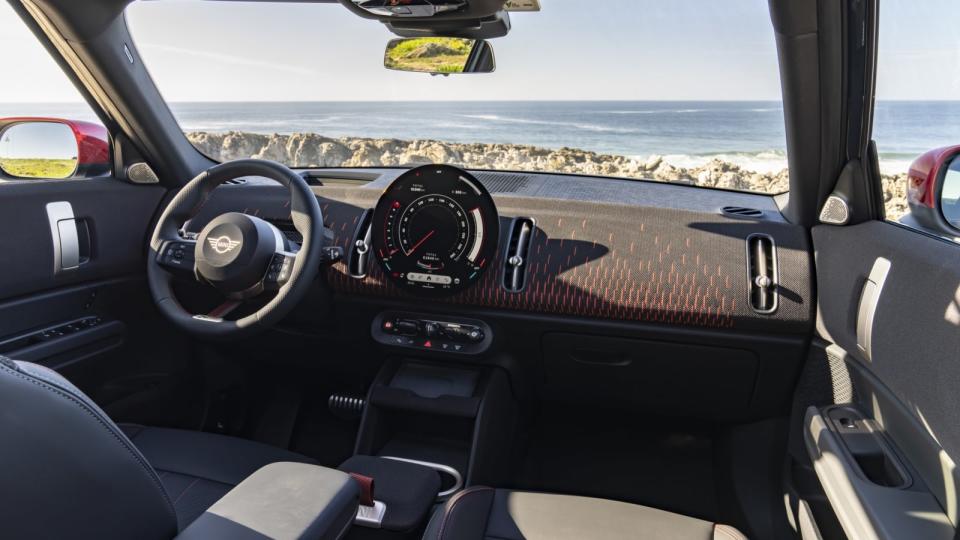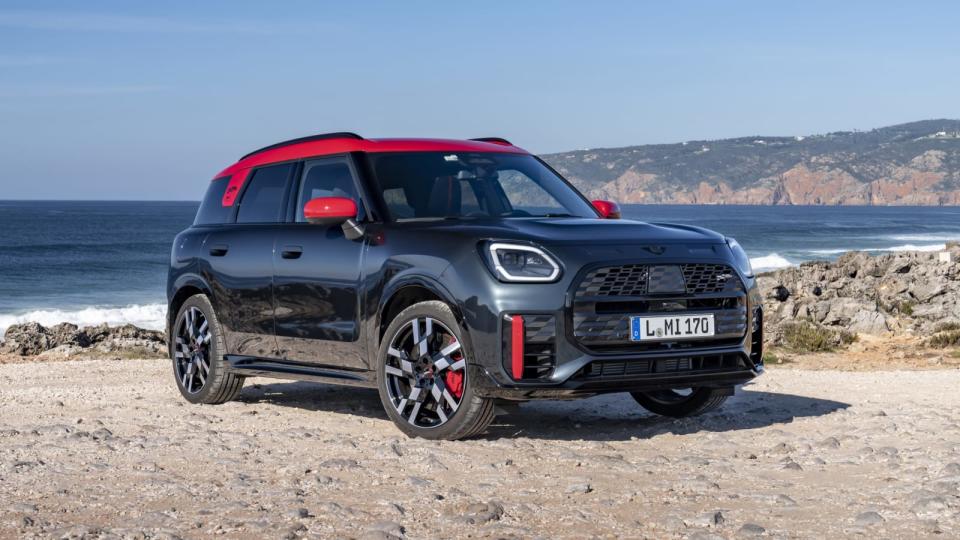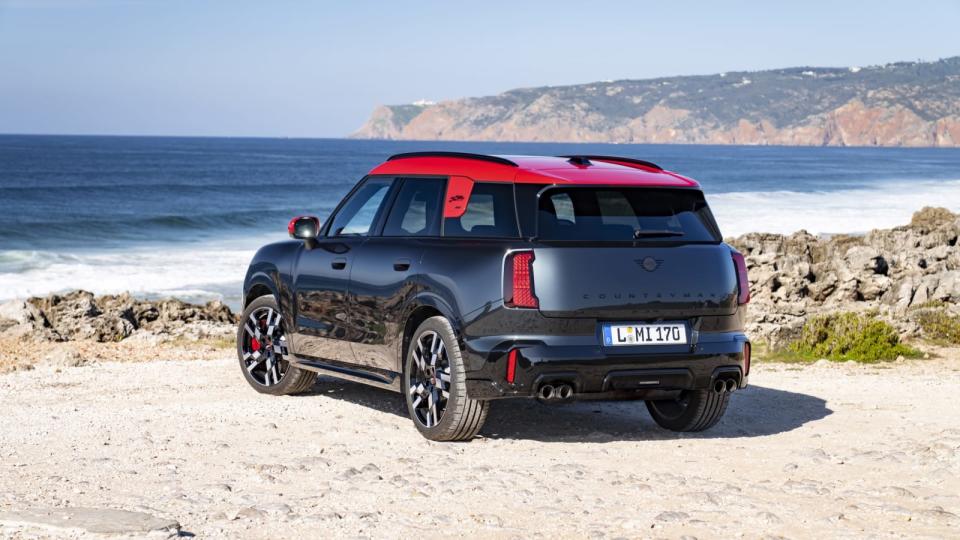2025 Mini Countryman First Drive Review: Mini no more

CASCAIS, Portugal — Let’s cut straight to the issue of size. If the original Mini was a sporting beagle ready for the hunt, the reborn version that hit the world stage in 2001 may have been an English bulldog, albeit bred in Germany, its parents being the engineers and coffers of BMW. From there, the Mini brand has grown in size in regular increments, culminating with the 2025 Mini Countryman that’s the subject of this review.
The first Countryman that we first tested in 2011 was comparatively large for the brand, but was suitably mini by SUV standards. Its stocky proportions moved it well into the working dog class. And then the second-generation Mini Countryman debuted for the 2017 model year, gaining 8 inches in length and more than 5 inches of width over its predecessor. We described it as “still in keeping with the brand's ethos from the very beginning when Alec Issigonis created a car that was microscopic on the outside but disproportionately spacious inside.” Nevertheless, it was starting too look a little husky, if you catch our drift.
Consider the 2025 Mini Countryman a mastiff, then.
Compared to the second-gen Countryman it replaces (which, as we already pointed out was much larger than the first edition), the new version is 5.1 inches longer, 2.4 inches taller and 0.8 inch wider. This translates into additional interior space for passengers and cargo, but adds an awful lot of visual and physical girth to something wearing a badge that literally calls out a diminutive size. The proportions are well considered, but parked next to the old car, the new Countryman sticks out like a sore thumb. Literally, like one that’s swollen post-accidental-hammer strike.
When the full Countryman model lineup is available Stateside, a base model may well be included, but at least for the start of 2025 production the lineup will start with an S edition for $39,895 that will have 241 horsepower and 295 pound-feet of torque. We’re not driving that today. Instead, the subject of this review will be the only other gas-powered Countryman: the high-performance John Cooper Works edition or JCW.
The new Countryman JCW starts at $47,895 and is powered by a 2.0-liter turbocharged four-cylinder that spins out 312 ponies (up from 301) and 295 pound-feet of torque (unfortunately down from 331) to all four tires through a seven-speed dual-clutch gearbox and Mini’s ALL4 all-wheel-drive system. It’ll hit 60 in around 5.4 seconds, and with its fat torque curve, the engine feels especially powerful in the middle range where most driving takes place. Still, size pays a penalty: The previous Countryman JCW hit 60 in 4.9 seconds.

The quick shifts that the seven-speed gearbox can fire off are appreciated, and its tuning feels equally adept at low throttle as high. Clicks of the paddle shifters to the left and right of the wheel equal satisfyingly quick gear changes, but the transmission’s default tuning is generally appropriate, depending on what mode the vehicle is in. The Countryman JCW’s steering is also good, if (as the theme continues) tuned surprisingly aggressively in sporty drive modes. The wheel is very thick, and there’s plenty of feedback on the twisty road surfaces experienced here in Portugal, indicating how much grip remained at all four corners. It’s also good at maintaining the straight ahead with little wandering.
We said “drive modes,” but they are now known as Mini Experience Modes that go beyond the usual adjustments to steering, throttle response, etc. to include changes to interior ambience and powertrain noises. These are similar in concept to what you’ll find in various BMWs, but have unique-to-Mini modes/names. Green acts as an eco-friendly mode with graphics that change from a mint hummingbird to a pink panther depending on how aggressive the driver is with the throttle, Timeless is characterized by seemingly relaxed settings and a beige palette. Go Kart tuning turns everything black and red while maximizing responsiveness. The default mode is called Core, and it’s where we generally preferred to leave the car.
Also brought over from BMW is a Boost Mode activated by the left (downshift) paddle on the steering wheel that immediately puts all modes into their most aggressive settings for 10 second bursts. This is a much-appreciated feature since it means the super-agro Go Kart mode doesn’t often feel necessary. There’s a noticeable change in sound between the modes, aural evidence of Mini’s use of the speakers to pump up the internal combustion jams in the cabin. We even heard occasional pops from the exhaust that we’re pretty certain were digitally generated.
There’s also a Trail Mode. We do not expect any actual Mini Countryman John Cooper Works owners to require a Trail Mode, but if they were to find themselves further off the beaten path than is advisable, readouts for the car’s various lateral angles could be helpful as it hypothetically clambers over obstacles. Ground clearance is pumped up to 8 inches, a useful increase from the old model’s 6.5 inches.



 Yahoo Autos
Yahoo Autos 
